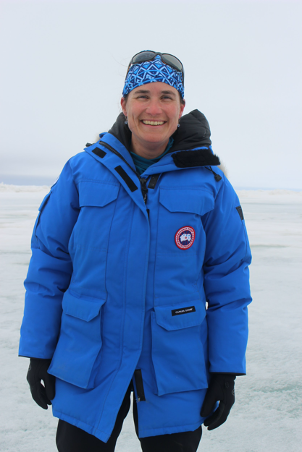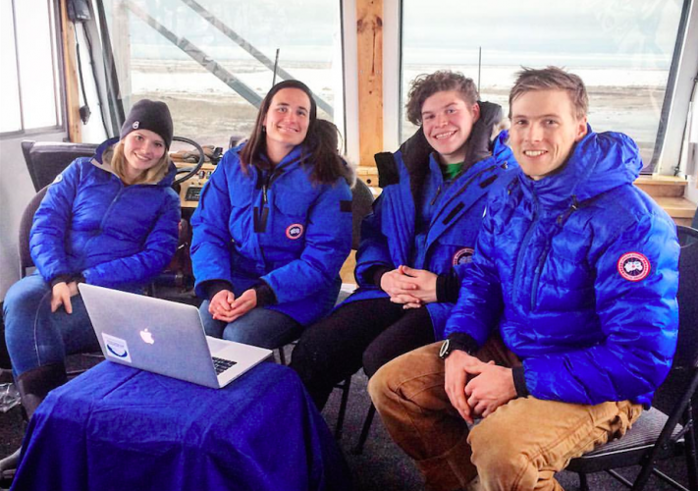
The activities are as follows:
- Teacher Guide
- Student activity, Graph Type A, Level 3
- Student activity, Graph Type B, Level 3
- Student activity, Graph Type C, Level 3
- Grading Rubric
Since 1978, satellites have measured changes in Arctic sea ice extent, or the area by the North Pole covered by ice. Observations show that Arctic sea ice extent change throughout the year. Arctic sea ice reaches its smallest size at the end of summer in September. Scientists who look at these data over time have noticed the sea ice extent in September has been getting smaller and smaller since 1978. This shocking trend means that the Arctic sea ice is declining, and fast!
Why does this matter? Well, it turns out that Arctic sea ice plays a major role in the world’s climate system. When energy from the Sun reaches Earth, part of the energy is absorbed by the surface, while the rest is reflected back into space. The energy that is absorbed becomes heat, and warms the planet. The amount of energy reflected back is called albedo.
The higher the albedo, the more energy is reflected off a surface. Complete reflection is assigned a value of 1 (100%) and complete absorption is 0 (0%). Lighter colored surfaces (e.g., white) have a higher albedo than darker colored surfaces (e.g., black). Sea ice is white and reflects about 60% of solar energy striking its surface, so its albedo measurement is 0.60. This means that 40% of the Sun’s energy that reaches the sea ice is absorbed. In contrast, the ocean is much darker and reflects only about 6% of the Sun’s energy striking its surface, so its albedo measurement 0.06. This means that 94% of the Sun’s energy that reaches the ocean is absorbed.

Jen first became interested in sea ice in the summer of 2007, when a record low level of sea ice caught scientists off guard. They worried that if the albedo of the Arctic declines, energy that used to be reflected by the white ice will be absorbed by the dark oceans and lead to increased warming. At the time, Jen was working with new satellite observations and found it fascinating to understand what led to the record low sea ice year. To continue her passion, Jen joined a team of scientists studying the Arctic’s energy budget.
Jen and her team predicted that the decline in the light-colored sea ice will cause Arctic albedo to decrease as well. Jen used incoming and reflected solar energy data to determine the changes in the Arctic’s albedo. These data were collected from satellites as part of the Clouds and Earth’s Radiant Energy System (CERES) project. Then, Jen compared the albedo data to changes in the extent of sea ice from satellite images to look for a pattern.


Featured scientist: Jen Kay from the Cooperative Institute for Research in Environmental Sciences and the Department of Atmospheric and Oceanic Sciences at the University of Colorado Boulder. Written by Jon Griffith with support from AGS 1554659 and OPP 1839104.
